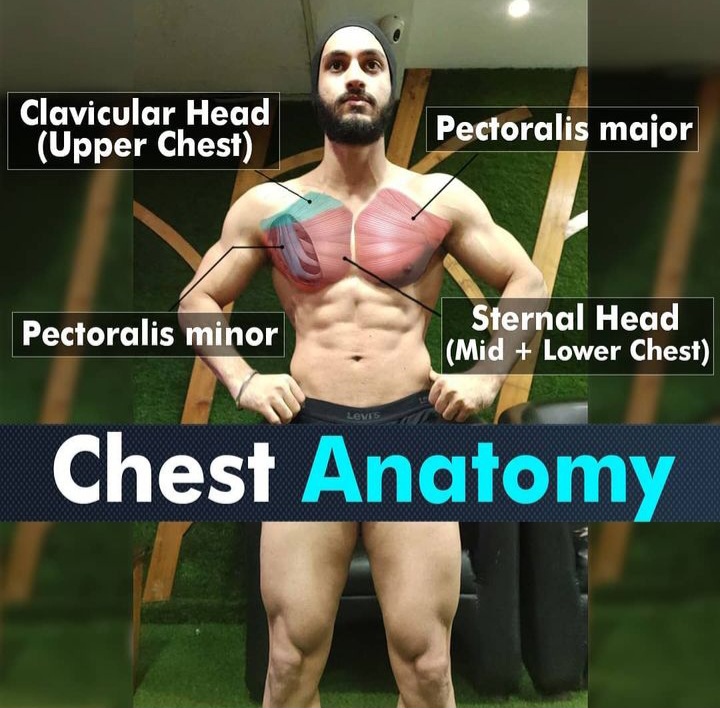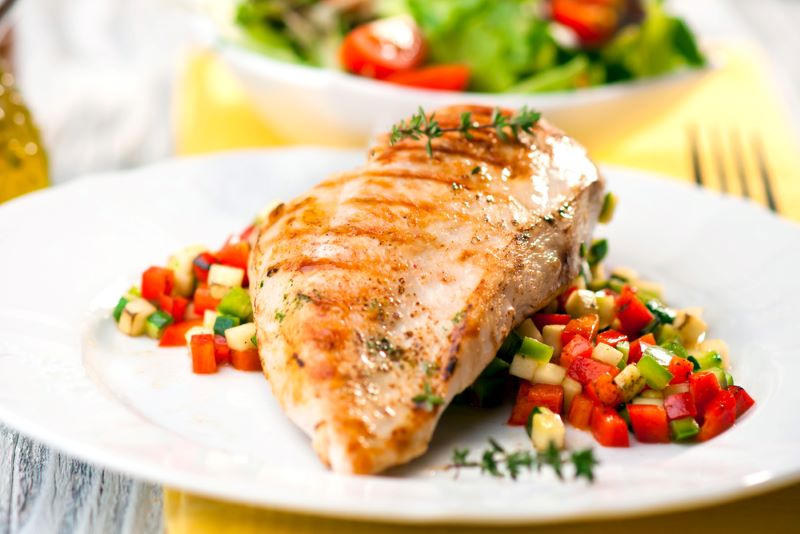Have you ever found yourself focusing on building the perfect chest, only to find that the results you want just aren’t happening?
Well, you’re not alone.
It’s a frustrating feeling when your hard work doesn’t seem to pay off, but sometimes it’s not a matter of not working hard enough – it’s a matter of bad chest insertions.
As someone who’s personally faced this struggle, I know how disheartening it can be to see others with impressive chest development, while yours seems to lag behind.
But, the good news is that with the right knowledge and tools, you can overcome this challenge and build a chest that you’re proud of.
In this article, we’re going to dive into the topic of bad chest insertions and explore what causes them.
We’ll also look at the importance of proper technique and form during workouts and explore ways to correct and prevent these imbalances.
If you’re tired of being held back by bad chest insertions, or if you’re experiencing pain and discomfort during chest workouts, then this article is for you.
Understanding Chest Anatomy and Insertions

If you’re looking to develop a strong, defined chest, it’s important to understand the anatomy of the chest muscles and how they function.
The chest muscles, also known as the pectorals, are comprised of two primary muscle groups: the pectoralis major and the pectoralis minor.
The pectoralis major is the larger of the two muscles and is responsible for most of the chest’s bulk. It’s comprised of two distinct heads – the clavicular head, which originates on the collarbone, and the sternal head, which originates on the sternum.
These two heads merge together at the midline of the chest and insert into the humerus bone in the upper arm.
The pectoralis minor is located beneath the pectoralis major and is responsible for stabilizing the shoulder blade. It originates on the third, fourth, and fifth ribs and inserts into the coracoid process of the scapula.
Good vs Bad Chest Insertions
Chest insertions play a significant role in the overall appearance of the chest muscles.
Good Chest Insertions
Those with good chest insertions will typically have a well-defined and symmetrical chest.
Good chest insertions are characterized by a balanced development of the upper, middle, and lower portions of the chest muscles.
Also, good chest insertions will generally have a natural separation between the pectoralis major and minor muscles, creating a more aesthetically pleasing appearance.
Bad Chest Insertions
Those with bad chest insertions may experience imbalances and asymmetry in their chest development, which can lead to a less defined and less aesthetically pleasing appearance.
Common issues associated with bad chest insertions include:
- Sloping or asymmetrical chest muscles
- Poor separation between the pectoralis major and minor muscles
- Lack of development in certain areas of the chest
By understanding the characteristics of good and bad chest insertions, you can assess your own chest development and create a targeted workout routine to address any imbalances.
Causes of Bad Chest Insertions and Imbalances
Bad chest insertions and muscle imbalances can be caused by a variety of factors, including:
Genetics
Genetics play a significant role in the shape and development of our muscles.
Some people have naturally shorter or longer muscle insertions, which can impact the overall appearance of the chest.
Poor Exercise Selection
Performing too many isolation exercises, neglecting certain areas of the chest, or performing exercises with improper form can all lead to muscle imbalances and bad chest insertions.
Dominant Front Delts
Overdeveloped front deltoids, or shoulder muscles, can cause the chest to appear smaller and less defined.
This is a common issue among individuals who perform excessive pressing movements without balancing it with adequate posterior deltoid and upper back training.
Injury
Injuries to the chest muscles or surrounding structures, such as the shoulder or upper back, can cause imbalances and affect the chest’s appearance.
Poor Posture
Poor posture can also contribute to bad chest insertions and muscle imbalances, particularly for people who spend long periods sitting or hunched over a computer.
How To Fix Bad Chest Insertions
If you’ve identified imbalances or asymmetry in your chest development, there are several strategies you can use to improve your chest insertions and achieve a more aesthetically pleasing appearance.
Focus on Compound Movements
Compound movements like the bench press and push-ups can help to build overall chest strength and size, which can improve the appearance of bad chest insertions.
When performing these exercises, be sure to maintain proper form and focus on engaging your chest muscles throughout the movement.
Use Isolation Exercises
Isolation exercises like dumbbell flyes and cable crossovers can help to target specific areas of the chest and improve imbalances in chest development.
As with compound exercises, you should use a full range of motion and focus on engaging the chest muscles throughout the movement.
Incorporate Variation into Your Workout Routine
Incorporating variation into your workout routine can help to stimulate new muscle growth and improve imbalances in chest development.
This can include using different grips or angles when performing exercises like the bench press or incorporating new exercises into your routine.
Maintain Proper Nutrition and Recovery

Proper nutrition and recovery are essential for building muscle and improving chest development.
Remember to consume adequate protein and other essential nutrients to support muscle growth, and prioritize rest and recovery to allow your muscles time to repair and grow.
Are Bad Chest Insertions Genetic?
Many people wonder if their chest insertions and imbalances are the result of genetic factors.
While genetics do play a role in determining muscle shape and size, there’s no definitive answer to this question.
The Role of Genetics in Muscle Development
Genetics can influence muscle development in a number of ways, including muscle fiber type, muscle shape, and muscle size.
For example, some people may have a greater proportion of fast-twitch muscle fibers, which can contribute to greater muscle size and strength.
Environmental Factors
Environmental factors also play an important role in shaping muscle growth and development.
For example, exercise habits, nutrition, and lifestyle factors all influence muscle growth and development.
Individual Differences in Chest Insertions
Individual differences in chest insertions can also be influenced by factors like posture, injury history, and overall muscle development.
While some people may be genetically predisposed to certain muscle shapes or imbalances, there are many factors that can influence muscle development and shape.
Conclusion
In conclusion, having bad chest insertions can be frustrating, but it’s important to remember that everyone’s body is different and there is no one-size-fits-all solution to achieving the perfect chest.
While genetics can determine muscle shape and size, environmental factors, individual differences in muscle development, and improper training techniques can also contribute to chest imbalances and asymmetry.
The good news is that with proper form and technique, a balanced workout routine, and a focus on adequate nutrition and recovery, you can work to improve your chest development and achieve a more aesthetically pleasing appearance.
By incorporating a variety of exercises that target the entire chest muscle group, you can also help address any imbalances and asymmetries.
Remember to always listen to your body and consult with a qualified fitness professional if you have any concerns or questions.
With patience, consistency, and a focus on proper technique and form, anyone can work towards achieving a stronger, more balanced chest.
That’s all for this article, but perhaps you’re interesting in high vs low lat insertions?
Hope this helped!
Sources
https://www.healthline.com/human-body-maps/chest-muscles
https://www.issaonline.com/blog/post/the-link-between-genetics-and-muscle-growth
I’ve been in the fitness and strength training industry for nearly a decade. In that time, I’ve gained 30 pounds of muscle, written hundreds of articles, and reviewed dozens of fitness supplements. As for my educational background, I’m a currently studying for my Active IQ Level 3 Diploma in Personal Training.

